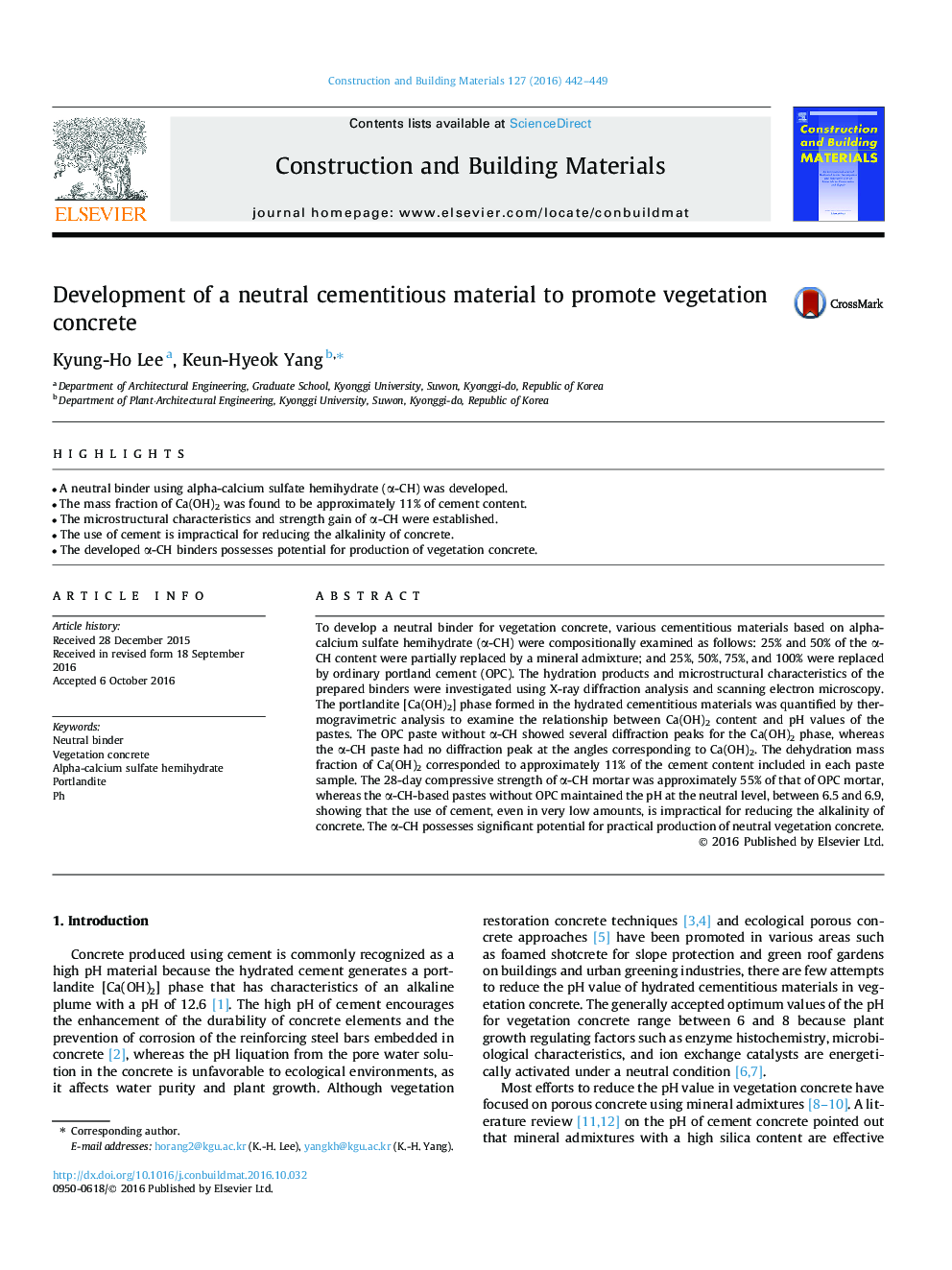| Article ID | Journal | Published Year | Pages | File Type |
|---|---|---|---|---|
| 4913957 | Construction and Building Materials | 2016 | 8 Pages |
Abstract
To develop a neutral binder for vegetation concrete, various cementitious materials based on alpha-calcium sulfate hemihydrate (α-CH) were compositionally examined as follows: 25% and 50% of the α-CH content were partially replaced by a mineral admixture; and 25%, 50%, 75%, and 100% were replaced by ordinary portland cement (OPC). The hydration products and microstructural characteristics of the prepared binders were investigated using X-ray diffraction analysis and scanning electron microscopy. The portlandite [Ca(OH)2] phase formed in the hydrated cementitious materials was quantified by thermogravimetric analysis to examine the relationship between Ca(OH)2 content and pH values of the pastes. The OPC paste without α-CH showed several diffraction peaks for the Ca(OH)2 phase, whereas the α-CH paste had no diffraction peak at the angles corresponding to Ca(OH)2. The dehydration mass fraction of Ca(OH)2 corresponded to approximately 11% of the cement content included in each paste sample. The 28-day compressive strength of α-CH mortar was approximately 55% of that of OPC mortar, whereas the α-CH-based pastes without OPC maintained the pH at the neutral level, between 6.5 and 6.9, showing that the use of cement, even in very low amounts, is impractical for reducing the alkalinity of concrete. The α-CH possesses significant potential for practical production of neutral vegetation concrete.
Related Topics
Physical Sciences and Engineering
Engineering
Civil and Structural Engineering
Authors
Kyung-Ho Lee, Keun-Hyeok Yang,
